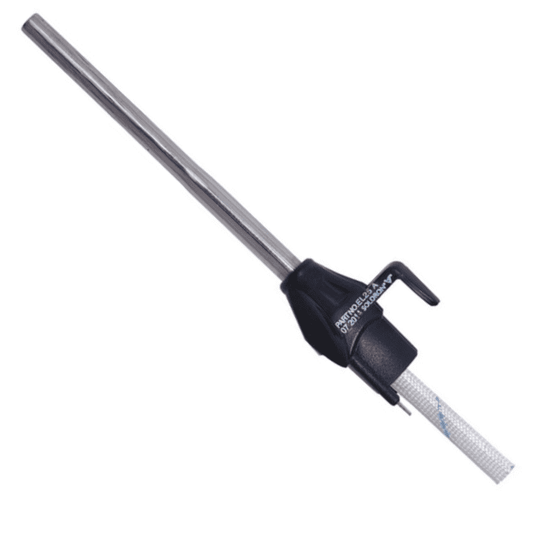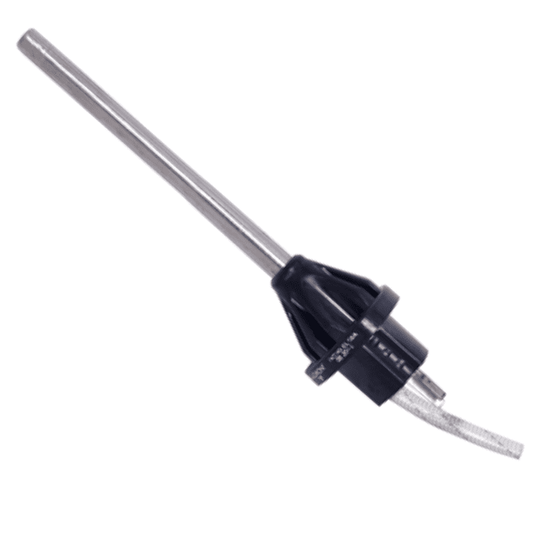Collections in this Category
-
-9%


Soldron 25W Soldering Iron Heating Element
Regular price Rs. 222Regular priceUnit price perRs. 245Sale price Rs. 222Incl. GST (No Hidden Charges)Sale -
-12%


Soldron 50W Soldering Iron Heating Element
Regular price Rs. 317Regular priceUnit price perRs. 360Sale price Rs. 317Incl. GST (No Hidden Charges)Sale
Buy Soldering Elements Online India
The term "soldering elements" can refer to a few different things. It may refer to the materials that are used in soldering, such as the soldering wire (also called solder) and the flux. It may also refer to the components of a soldering iron, such as the heating element and the temperature control system.
In terms of materials, the main elements of soldering are the solder and the flux. Solder is a type of wire that is made of a low-melting-point alloy, typically consisting of lead and tin. It is used to join two metal surfaces together by melting and flowing into the gap between the surfaces. Flux is a chemical compound that is applied to the metal surfaces being soldered to help the solder flow more smoothly and form a strong, reliable joint.
In terms of the components of a soldering iron, the main elements are the heating element and the temperature control system. The heating element is a resistive wire or other device that is used to heat the soldering iron tip to the required temperature. The temperature control system regulates the temperature of the soldering iron, allowing the user to adjust it as needed for different soldering applications.
Overall, soldering elements refer to the materials and components that are used in the soldering process to join metal surfaces together and create a strong, reliable connection.
FAQs:
1.Which element is used in soldering iron?
- The element used in a soldering iron is the heating element, which is a resistive wire or other device that is used to heat the soldering iron tip to the required temperature. The heating element is typically made of a material with a high resistance, such as Nichrome or other alloys, and is connected to an electrical power source. When an electric current is passed through the heating element, it generates heat, which is then transferred to the soldering iron tip. The temperature of the soldering iron is regulated by the temperature control system, which may consist of a thermostat, a temperature sensor, and other components. The temperature control system allows the user to adjust the temperature of the soldering iron as needed for different soldering applications.
2.What are the components of soldering?
- The main components of soldering are the soldering iron, the solder, and the flux. The soldering iron is the primary tool used for soldering and consists of a heated tip that is used to melt the solder and join two metal surfaces together. Soldering irons are available in a range of sizes and styles to suit different soldering applications and may also include a temperature control system to regulate the temperature of the iron. Solder is a type of wire that is made of a low-melting-point alloy, typically consisting of lead and tin. It is used to join two metal surfaces together by melting and flowing into the gap between the surfaces. Solder is available in a range of diameters and compositions to suit different soldering applications. Flux is a chemical compound that is applied to the metal surfaces being soldered to help the solder flow more smoothly and form a strong, reliable joint. Flux may be applied in a liquid form or as a paste and is available in different types to suit different soldering applications.
3.What are the five soldering tools?
- The five main tools that are typically used in soldering are:
- Soldering iron: This is the primary tool used for soldering and consists of a heated tip that is used to melt the solder and join two metal surfaces together. A small, fine-tipped soldering iron is typically best for soldering small components and electronics.
- Soldering wire: This is a type of wire that is used as the actual solder. It is available in a range of diameters and compositions to suit different soldering applications. For most soldering tasks, a fine-gauge solder wire is generally best.
- Soldering flux: This is a chemical compound that is applied to the metal surfaces being soldered to help the solder flow more smoothly and form a strong, reliable joint. A jewelry-specific flux may be recommended, as it is formulated to work well with fine-gauge solders and to minimize the formation of firescale (a discoloration that can occur on the surface of the metal).
- Soldering iron stand: This is a support that holds the soldering iron when it is not in use, helping to keep the work area safe and organized.
- Soldering iron tip cleaner: This is a tool used to clean and maintain the soldering iron tip. It can be a wet sponge, a brass wire sponge, or a special tip cleaner compound.
4.What are the 4 types of solder?
- There are several types of solder that are used for different soldering applications. Here are four common types:
- Lead-free solder: This type of solder is made without lead and is used for electronic and other applications where lead is not acceptable. Lead-free solder is typically made of tin, silver, and copper, or other alloys, and has a higher melting point than leaded solder.
- Leaded solder: This type of solder contains lead and is used for general soldering applications where lead is acceptable. Leaded solder is typically made of tin and lead, and has a lower melting point than lead-free solder.
- Rosin-core solder: This type of solder has a core of rosin flux that is encased in a layer of solder. It is used for general soldering applications and is available in both leaded and lead-free versions.
- Acid-core solder: This type of solder has a core of acid flux that is encased in a layer of solder. It is used for soldering metal pipes and other heavy-duty applications and is typically not recommended for electronic or other precision soldering work.
Popular Searches
Raspberry Pi | M5Stack | Development Boards | DIY Kits | 3D Printers/Pens | Arduino | Sensors | Drone Parts | Motors & Mechanical | Display Module | Batteries & Power Supply | Measuring Tools & Instruments | Cables & Connectors | Prototyping Boards | IOT & Wireless
- Choosing a selection results in a full page refresh.
- Opens in a new window.





